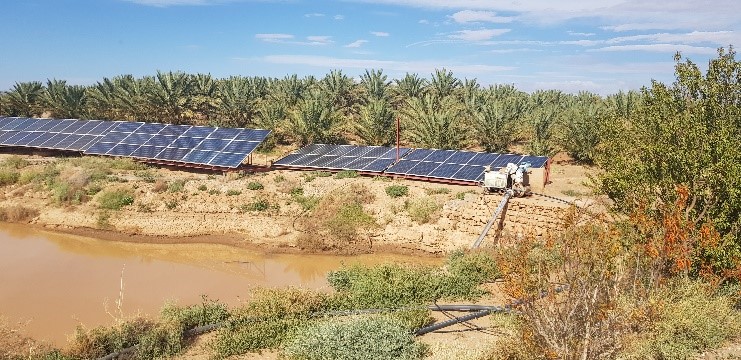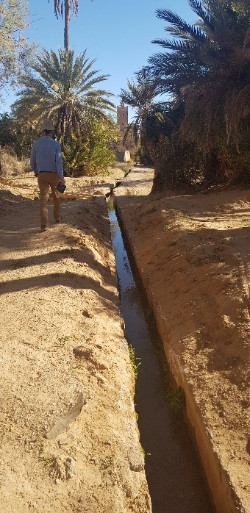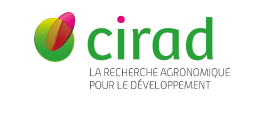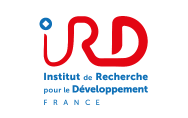The oases of the pre-Saharan basin of the Todgha wadi in the South-Eastern Morocco receives an average annual rainfall of 130 mm. Their existence is explained by their geographical position along the rivers descending from the southern slope of the High Atlas where several perennial sources exist. Oasis agriculture was traditionally based on the waters of the «Khettaras», the «Aghrour» and the diversion of wadis water by means of the fusible dikes «Ougoug». This irrigation is carried out by gravity by water's turns.
 Agricultural exploitation based on groundwater and flood water (©Khardi, 2020)
Agricultural exploitation based on groundwater and flood water (©Khardi, 2020)
Since the 1970s, the area has experienced increasing exploitation of groundwater by pumping in agricultural extensions (next to traditional oases). These extensions were created initially through investment by emigration funds, then by the encouragement of the public authorities.
The succession of drought periods -especially during the 1980s'- combined with the growth of areas irrigated by pumping have pushed the State to set up floodwater spreading dikes and transport infrastructure to save the traditional oasis.
 Oasis of Ait ben omar fed by the ‘Khettara’ (©Khardi, 2020)
Oasis of Ait ben omar fed by the ‘Khettara’ (©Khardi, 2020)
Nowadays, innovative practices have been initiated and adopted by public institutions and some farmers to improve water resilience in this oasis context. The major objective of this research is to identify and analyze innovations in water resource mobilization and irrigation that can improve the resilience of oasis agriculture.
Keywords: oasis, agricultural extensions, irrigation, innovations, water resilience.






